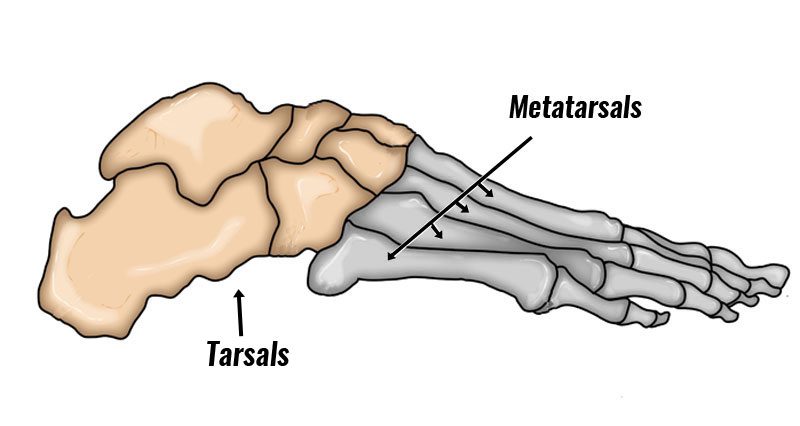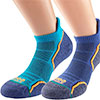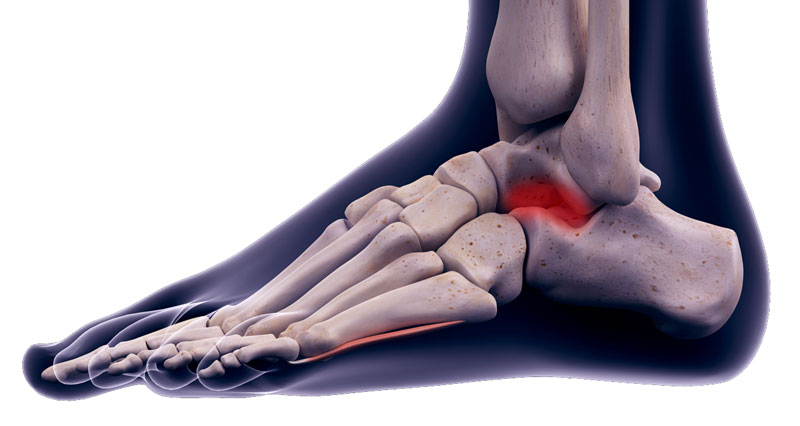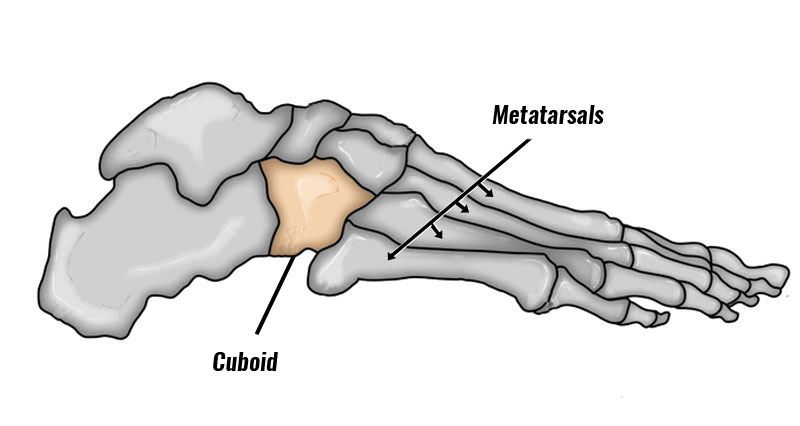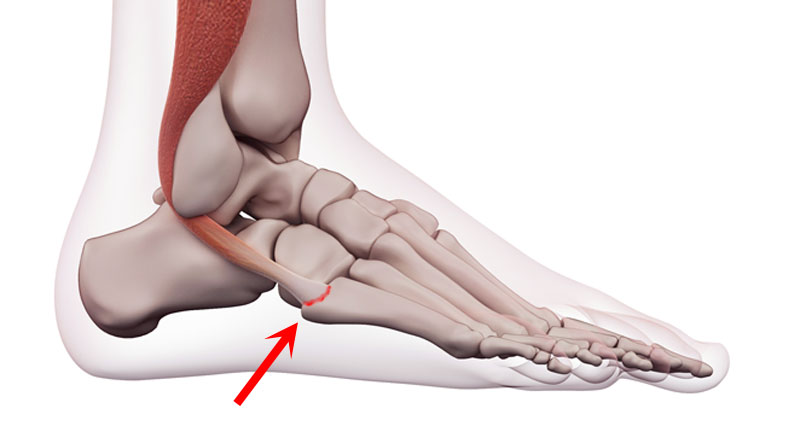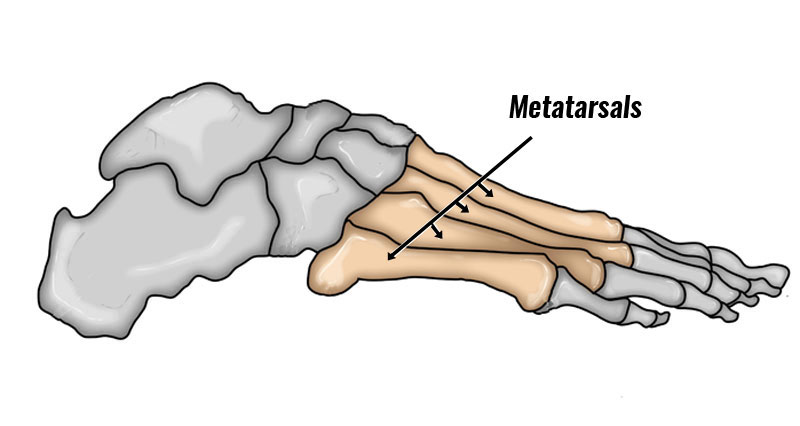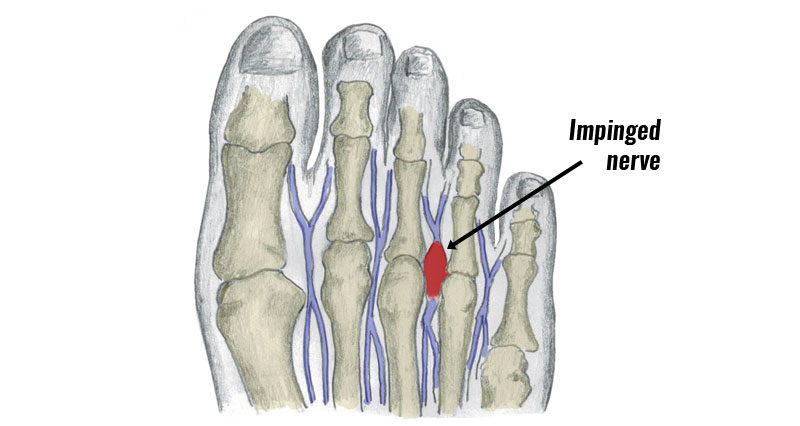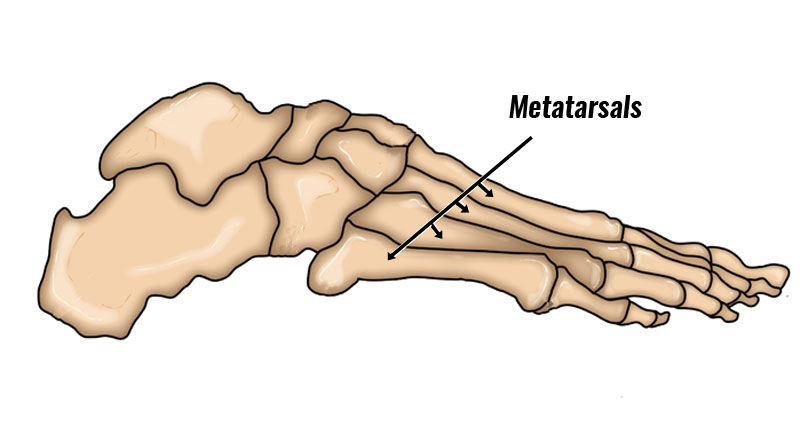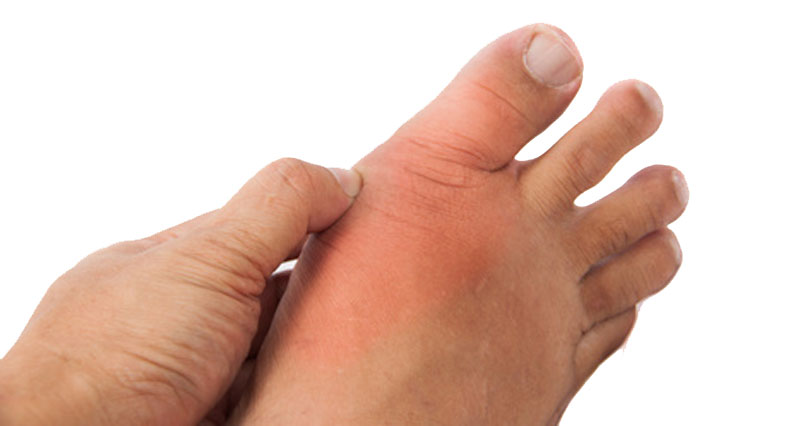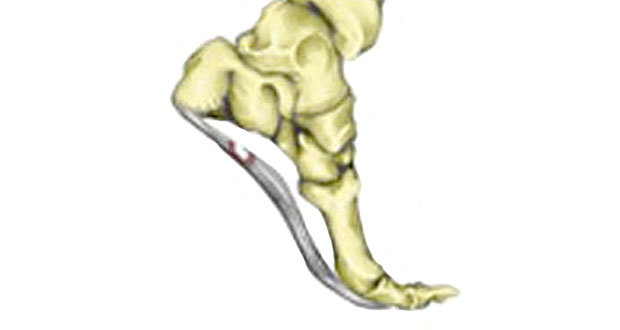A midtarsal joint sprain is an injury to one or more of the ligaments holding the tarsal bones in the middle of the foot together. The exact location of pain will depend on the affected ligament. It is rare but can occur in gymnastics, footballers, and jumping sports.
Medically reviewed by Dr Chaminda Goonetilleke, 20th Jan. 2022
Symptoms of a midtarsal joint sprain
The symptoms and severity of a midtarsal joint sprain depend on which ligaments have been injured. However, in general:
- You will normally feel pain on the outside middle of your foot.
- Swelling may be visible on the outside top of the joint.
- Certain foot movements will be painful.
What is a Midtarsal joint sprain?
Injury to the midtarsal joints is rare. However, it is more common in gymnasts, footballers, and those who do sports that involve jumping.
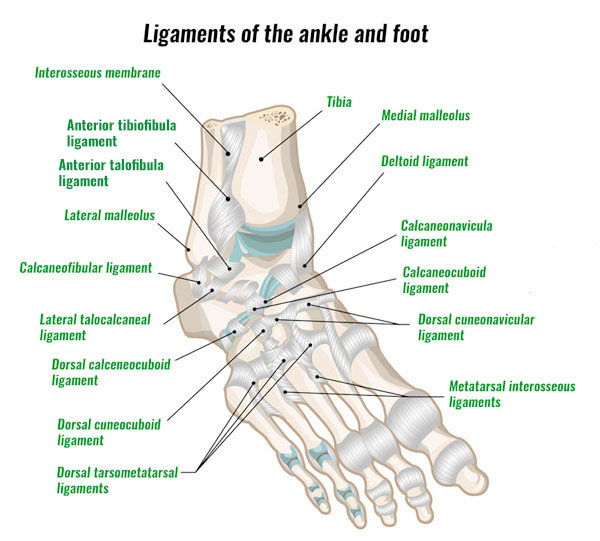
The midtarsal joint comprises:
- The talonavicular joint is between the talus and navicular bones.
- The calcaneocuboid joint between the calcaneus and cuboid bones is on the outside of the foot.
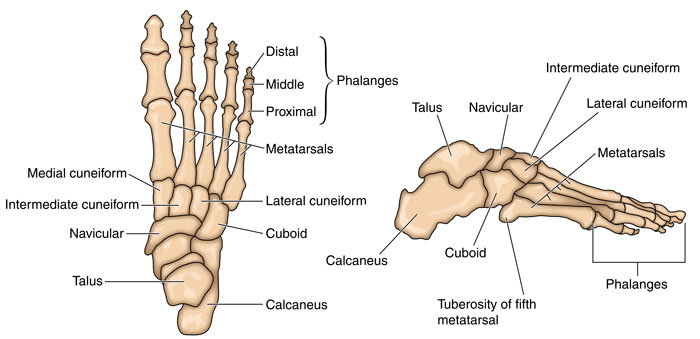
A midtarsal joint sprain involves two ligaments. Each produces slightly different symptoms.
The Bifurcate ligament is Y shaped and consists of 2 parts. It spits into the Calcaneonavicular ligament and the Calcaneocuboid ligament.
The Calcaneocuboid ligament connects the Calcaneus and the Cuboid, on the top of the foot.
Calcaneocuboid ligament injury
This is more likely following a sprained ankle or similar. Symptoms of a midtarsal joint sprain involving the calcaneocuboid ligament:
- Pain on the outside middle of your foot.
- Pain and swelling on the top and outside of your foot.
- Inverting your foot (or turning it so the soles face inwards), may be painful.
- Your doctor may use an MRI scan to confirm the diagnosis. An X-ray rules out any fractures.
Treatment:
Rest your foot and avoid weight-bearing. Apply cold therapy for 10 minutes every hour for the first 24 to 48 hours. This helps to reduce pain and inflammation.
Your doctor may prescribe NSAIDs (such as ibuprofen) to reduce pain and inflammation.
Orthotic shoe inserts help correct any biomechanical foot problems. If your symptoms persist, then a doctor may prescribe a corticosteroid injection.
Bifurcate ligament injury
This type of midtarsal joint sprain occurs after a severe ankle injury. It also occurs in conjunction with a fracture of part of the calcaneus (heel bone), called the processor prominent.
Symptoms include:
- Pain on the outside middle of your foot.
- Pain is worse by pointing the foot down and rolling it outwards (plantar flexing and supinating).
- An MRI scan will confirm the diagnosis and X-rays should be done to identify fractures. In particular, the anterior process of the heel bone.
Treatment:
Immobilize your foot, possibly in a cast, for 4 weeks. Surgery may be considered if your injury is severe. And/or if bones have been displaced out of their normal positions.
